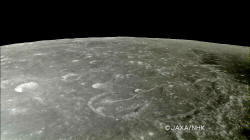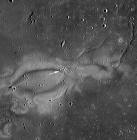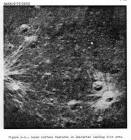|

by Stephen Smith
April 19, 2010
from
Thunderbolts Website

The Moon's magnetic
field.
Credit: Mark A.
Wieczorek
Recent lunar missions have uncovered new
information that changes the way we look at the Moon.
The Moon is a "dead body," according to modern theories of the Solar
System; it long ago exhausted any remnant heat that it retained from
its birth. It has no intrinsic magnetic field and it does not
radiate, except to reflect the light that it receives from the Sun.
But could electrical forces have
recently shaped the lunar surface? The
discovery of water ice at the south pole buried beneath
the walls of sun-shaded craters was one of the more important new
finds of the past few years.
Latent
magnetic fields were detected by
the
Lunar Prospector spacecraft in the
1990s. Evidence from that experiment points to a variable strength
magnetic field imprinted on the Moon, and magnetism is a result of
electric currents.
Recently, scientists from NASA's Lunar Science Institute’s
Dynamic Response of the Environment at the Moon (DREAM)
project announced the discovery of
electric charge in some of the polar craters.
According to William Farrell of
NASA’s Goddard Space Flight Center:
"....in addition to the wicked cold,
explorers and robots at the bottoms of polar lunar craters may
have to contend with a complex electrical environment as well,
which can affect surface chemistry, static discharge, and dust
cling.”
It is thought that the solar wind might
be what charges up the craters to many hundreds of volts.
Computer simulations led the researchers
to believe that the solar wind acts like winds on Earth. Depending
on temperature, winds flow into cold valleys. On the Moon, the solar
wind flows down onto cold crater floors.
As their theory states, electrons, having less mass, flow into a
lunar crater before the heavy ions, forming a negative charge. The
heavy ions move into the crater at a lower pressure then the
electrons, causing the interior walls and floor to become negatively
charged. Charge separation is greatest along the crater rim closest
to the solar wind flow.
The article suggests that,
"....the heavy ions have the
greatest difficulty getting to the surface. Compared to the
electrons, they act like a tractor-trailer struggling to follow
a motorcycle; they just can’t make as sharp a turn over the
mountain top as the electrons."
Planetary scientists relate electric
current flow with kinetic illustrations once again.
Between May 1966 and January 1968, NASA launched the
Surveyor spacecraft, which
soft-landed on the lunar surface. Surveyor 7 made one of the
mission's most intriguing discoveries when its onboard camera
detected a faint glow in the lunar night, hovering over the horizon.
In 1998, the
Lunar Prospector detected a
surprisingly high voltage change as it passed through
Earth's magnetotail.
The magnetotail is part of a plasma
sheath that envelops our planet. The Moon passes through it once a
month during full moon phase. The electric differential was found to
occur during that passage.
The Earth is surrounded by a magnetic field that is trapped inside a
cometary plasma tail that stretches well beyond the Moon's orbit.
The Earth's magnetospheric tail points away from the Sun due to the
high-speed ions streaming along with the solar wind. The movement of
the Moon through the ionized plasma affects the materials in the
lunar regolith.
Electrons accumulate and produce a
negative charge on the ultra-fine dust particles, causing them to
repel each other and drift off the surface. The levitating dust and
the faint glow on the lunar horizon are most likely because the Moon
has no atmosphere at all, so the electric charges have greater
impetus.
Charge differential between the day and night side of the Moon might
generate an ion “wind” flowing from the negatively charged night
side into the more positively charged sunlit side. The negative
charge on the bright surface during daylight is moderated by the
photoelectric phenomenon, while it tends to build up in the
darkness, forming static electricity.
The charge variation between the two
hemispheres has been measured at more than 1000 volts.
Electric Universe pioneer
Ralph Juergens explained the
structure of
Tycho Crater on the Moon in
electrical terms:
"The visual evidence suggests that
triggering electrons for the Tycho discharge were assembled by
means of an atmospheric-breakdown process that drew them from
numerous distant points in all directions and hauled them over
the surface to a common collection point.
On the far side of the Moon are
several more long-rayed craters, presumably marking sites where
much the same thing happened; these, too, are located in
highland terrain."
Earth's cometary plasma cocoon changes
shape and power as electric currents from the Sun bombard our
planet.
It is sometimes described as a “flag
waving” because of somewhat regular oscillations in the field. This
means that the Moon does not simply pass through the magnetotail
once and briefly, but that electric charges will brush the surface
several times during each monthly encounter.
Lunar Magnetic Anomalies
by Stephen Smith
November 15, 2010
from
Thunderbolts Website
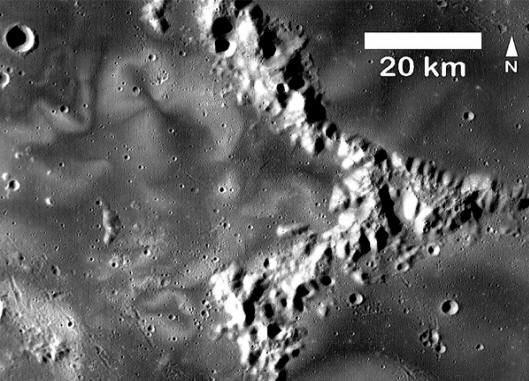
Swirls in Mare
Ingenii are associated with magnetic anomalies there.
Original image credit: NASA/GSFC/Arizona State University
The relationship between electricity and
magnetism has been known for more than a century.
In a previous Picture of the Day, the complex surface features of
the Reiner Gamma Formation (image 1) were discussed. It
remains a mystery for those who insist on slow, uniform cooling and
a relatively stable lunar environment. The swirling pattern of
bright material is located in Oceanus Procellarum (image 2),
near Reiner crater.
Recent maps of lunar magnetic anomalies reveal several other
formations of high albedo material also associated with areas of
crustal magnetism imprinted on the lunar surface.
Descartes (image 3), the Apollo
16 landing site, possesses a prominent magnetic signature.
Powdery swirls in
Gerasimovich crater, on the Moon's
far side, are estimated to be less than five centimeters thick.
Gerasimovich is also notable for its
magnetic attribute.
Latent magnetic fields in Mare Marginis and Mare Ingenii were
measured by the
Lunar Prospector spacecraft in the
1990s. Measurements of the remnant magnetism in the lunar crust were
taken by observing the magnetic reflection of electrons from the
Moon’s surface. The differences are small, but the evidence points
to a variable strength magnetic field imprinted on the Moon.
Since magnetism is a result of
electrical currents, then the swirling pattern of the various
formations could be due to an external electrical influence.
The Lunar Reconnaissance Orbiter's Mini-RF radar imager has returned
the most current images of the lunar swirls.
A
published paper reports:
"Lunar swirls appear to overlay the
lunar surface, apparently representing diffuse brightening of
unmodified terrains. Lunar swirls are associated with regions of
anomalously high crustal magnetic fields, but their exact
formation mechanism is unknown."
Since magnetism and electricity are
so intimately bound together that they are known as one
electromagnetic force,
-
Why is it puzzling for planetary
scientists when confronted with anomalous magnetic
signatures, not just on the Moon but on Mars and Mercury as
well?
-
Would it be unreasonable to
conclude that an electric field impinged on those bodies,
leaving behind a remnant magnetic domain?
On
Mars, swirling patterns (image 4) are often
seen incised (image 5) into the rock strata, implying a more
powerful electric discharge.
|
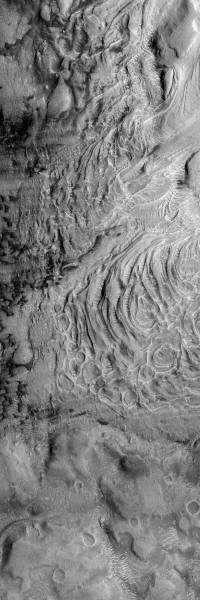 |
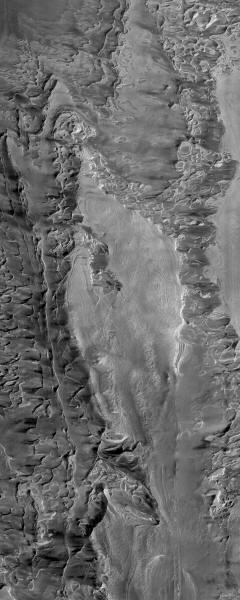 |
|
image 4 |
image 5 |
The Moon might be less conductive, or
might have been spared a direct hit from interplanetary lightning
storms, so the eddy currents induced by the arcs could have left
shallower impressions.
However, the appearance of gigantic
craters and
maria suggests extreme events that
might have impacted its surface.
As
Electric Universe theorists
postulate, a common explanation for each of the geomorphological
features that we have illustrated is that planets and moons exist
within an electrically active Solar System that could have been more
energetic in the past.
Each object is normally insulated within
its individual charge sheath. However, if those sheaths touch,
electric charge can be exchanged. Those electromagnetic exchanges
are what might have created what we see today.
Is there a possibility that those forces will be unleashed again?
There is no way to know at this point.
Suffice to say, the evidence reveals
that they were once active in the recent past.
|



